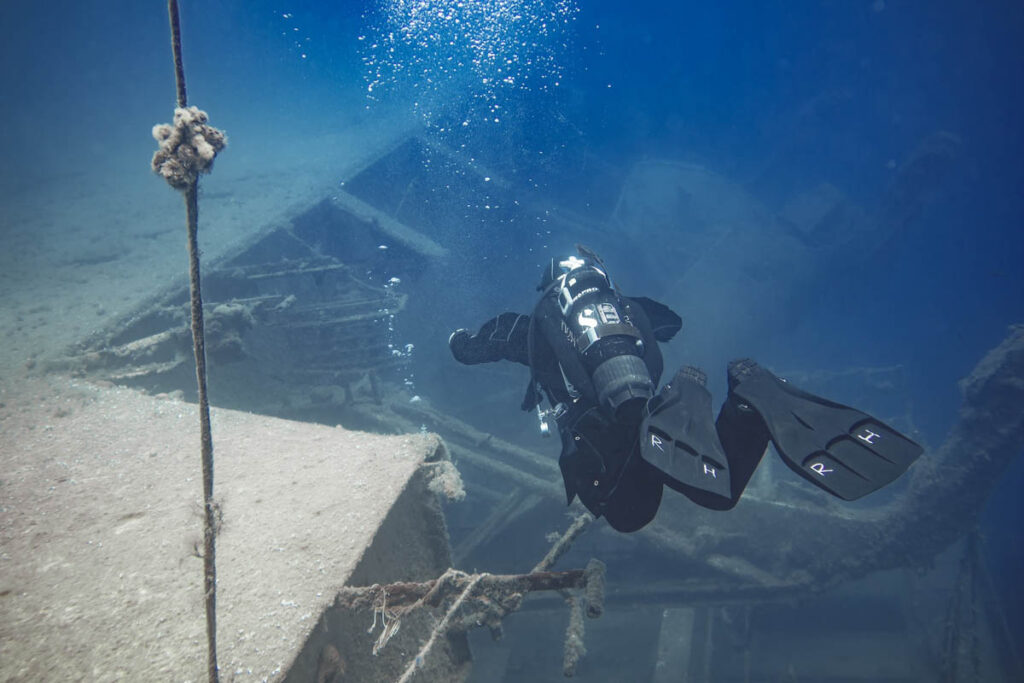A diver who had gone missing while exploring the Zenobia shipwreck was discovered lifeless by search and rescue teams within the ship’s confines on Friday. The incident unfolded in the waters off the coast of Larnaca, Cyprus, an area renowned for its popularity among divers.
The discovery was made around 11 a.m. on Friday when a search party located the missing diver in a compartment of the Zenobia ship, which is not frequently visited by divers. The incident has raised concerns about the safety of diving in the area.
The information was confirmed by Commander Andreas Charalambides, who leads the Larnaca search and rescue coordination center. He disclosed that the diver was not found in a restricted section of the ship. According to Charalambides, access to different parts of the wreck primarily depends on the diver’s skills and endurance, leaving room for speculation that the deceased diver might have ended up in that particular area accidentally.
The commander suggested that disorientation, panic, or poor visibility could have prevented the diver from exiting the compartment. He emphasized the unfortunate outcome of the incident, speculating that, based on camera footage provided by another member of the diving group, the diver might have lost track of time.
The deceased diver was reportedly an instructor who had been guiding a couple during the dive. The couple successfully ascended, but the missing diver encountered difficulties. Charalambides noted that the conditions inside the Zenobia wreck are challenging, including limited visibility and difficulties in finding the exit.
The search efforts began at 8 a.m. on Friday, the second day of the operation, following the diver’s descent into the water at 10 a.m. on the previous day. The alarm was raised when the scheduled dive time elapsed, and the missing diver failed to resurface.
Search teams, including divers from the police and the national guard, as well as volunteer groups, scoured the area around the Zenobia shipwreck. Helicopters and boats were deployed to search the sea surface within a wide radius.
Commander Charalambides, when asked about the incident and the fact that the diver was seemingly trapped in the wreck, suggested that restrictions on certain areas of the shipwreck should be considered in the future.
It is worth noting that at least six diver fatalities have been recorded at the Zenobia site since the ship sank in 1980 en route to Syria from Sweden. Recent diving incidents have ignited debates about safety, and a longstanding dispute exists between the wreck’s owner, AAK Larnaca Napa Sea Cruises, and the divers’ association.
The owner has previously claimed that a state of “anarchy and illegality” prevails at the site, while the divers’ association has countered, asserting that the site maintains one of the best safety records worldwide, with its members adhering to all regulations and licensing requirements.
Nicos Nicolaou, the head of the divers’ association, affirmed to the Cyprus Mail that the area witnesses over 30,000 divers annually, and this incident is the first of its kind this year. He emphasized the importance of regulations, arguing that without them, there would be numerous casualties daily.
The Zenobia shipwreck, which sank in 1980, is celebrated as one of the best diving sites in the Mediterranean and is often likened to the “Titanic of the Mediterranean.” It is regularly listed among the top ten wreck dive locations globally. Situated 1,500 meters off the Larnaca coast, the wreck lies at a depth of 42 meters and spans 172 meters across.
Notably, a similar incident occurred last year when another diver had to be hospitalized due to pulmonary edema following a rescue operation at the Zenobia shipwreck.
As the investigation unfolds, the diving community and authorities will be closely scrutinizing the circumstances surrounding this tragic incident, and discussions about the safety and regulations of the site are expected to continue.







